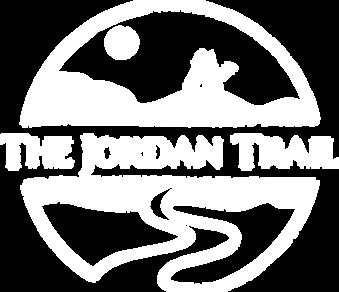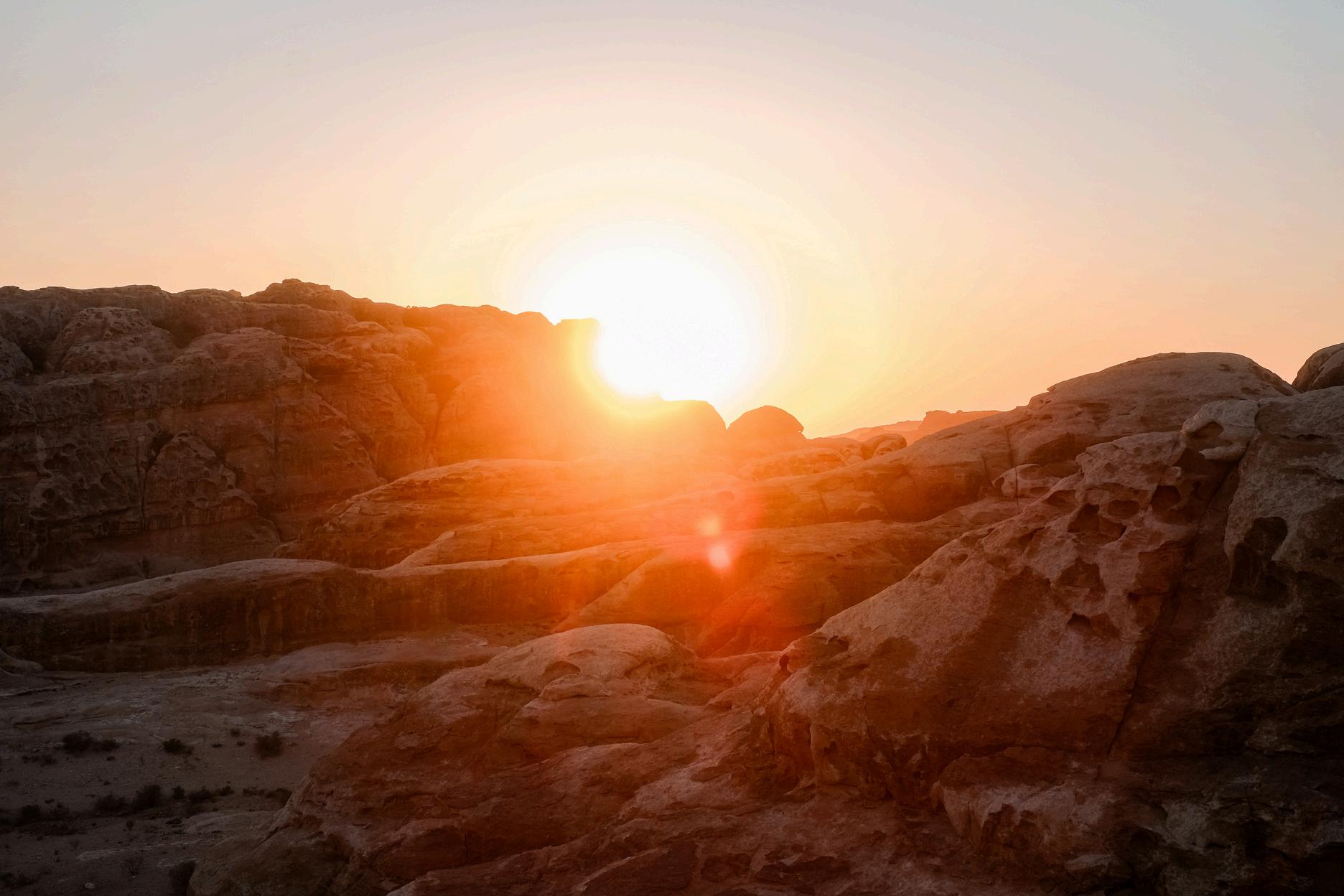





Since the Jordan Trail runs through a hot and dry climate, it’s very important to make sure you have the right clothing.
This list will show you what absolutely needs to be in your luggage!
You can rent camping gear and hiking poles from us. However, there are still other essential items you should bring with you to Jordan.
Sweater/fleece for the evenings
Breathable, UV-protective clothing to protect your skin if you ' re sensitive to the sun
Long and short hiking pants (quick-drying)
Underwear
Hiking socks
Swimwear
Toiletry bag (basic necessities, as small and light as possible)
Sunscreen SPF 50+
Multi-purpose soap (bar)
Toothbrush and toothpaste (biodegradable)
Lip balm
Hand sanitizer
Wet wipes
A roll of toilet paper
Microfiber towel
First aid kit (with plasters, sports tape, and an emergency blanket)
Medication + instructions
Insect repellent spray
Menstruation products
Hiking boots, minimum type A/B
Flip-flops
Old sports shoes / sandals (eg, Tevas) with good soles, in which you can comfortably walk at least 6 km in water essential for the first day of hiking!
Large backpack/duffelbag (max 12 kg)
Women: 65L - 70L
Men: 70L - 75L
Your large backpack will be transported by jeep, but you’ll need a small daypack (30 - 35L) to carry your daily essentials
Waterproof cover for your backpack
Cap, hat, or “Hatta” (the scarf worn by the locals)
Sunglasses (minimum category 3)
Headlamp
Camelbag / 3L bottles (or 2x 1,5L)
Hiking poles
Power bank(s) minimum 10,000 mAh, maximum 20,000 mAh and phone charger
Plastic freezer bags for electronics/phone
Small trash bags for daily waste
Duct tape for minor repairs
Passport, health insurance card, bank card
Flight tickets + flight confirmation
Cash (withdraw upon arrival at the airport in Jordan, around 80 euros)
Healthy snacks for the road
For example: muesli bars, dried fruit, nuts (rich in protein and carbs)
Camera/Gopro
Chewable sugar (eg, dextro energy) and electrolyte for your water
Games for the eveing
Inflatable pillow (you can also roll up your fleece and use it as a pillow)
Sleep mask and earplugs
Sitting pad
Buff or a light scarf you can wet and wear around your neck
*For more information about equipment, read our advice on the following pages
**For ecological reasons, only print this page if you want a paper version
***Take probiotics a few days before departure

The water you will be walking through

Good camping gear is, of course, essential. Make sure that the equipment you bring meets the requirements listed below Or make things easier for yourself and rent your camping gear through us — that way, you can be sure you have the right equipment.
Sturdy, lightweight two-season tent (with aluminum poles)
Warm sleeping bag (comfort temperature of at least 5°C)
Sleeping mat (R-value of minimum 25)
Sleeping bag liner
*Included if you rent your camping gear through us

some tips to help you prepare

Use one large backpack for all your gear for luggage transport, and don’t hand over loose bags or separate items
Wear your heaviest clothes and hiking boots when you travel.
Try to pack as much as possible in a small carry-on bag for the flight. If your backpack doesn’t arrive, at least you’ll have your essential gear with you!
Attach your trekking poles to the outside of your backpack, cover them with your rain cover, and write your name on the outside (of the cover) If the tips of your poles aren’t protected, we recommend wrapping them in tape to avoid damaging other luggage during the flight
Pack your pocket knife in your checked baggage.
Leave unnecessary luxury items at home (books, hairdryers, fancy toiletries).
Avoid wearing jeans and cotton clothing — they stay damp for a long time and are heavy.
Place heavier items at the bottom of your backpack for better balance on your back
Hiking boots of at least type A/B are essential It’s important that your boots provide full ankle support. If the soles have a yellow Vibram logo, that’s also a sign of quality.
Do you still have some almost new hiking boots in your closet, but you've barely used them?
Shoes often dry out when left unused for a long time. This can lead to brittleness. Are you unsure whether your shoes are still suitable for a long hike? Have them checked at a specialist shop, for example, treat them with Nikwax beforehand, and walk in them before setting off on the Jordan Trail.
Do you have old hiking boots?
Check if there is still enough tread under the shoe, treat them beforehand with spray or wax.
You should have a space of +/- 05 cm at the front of the shoe in front of your toes: Your feet swell as you walk Make sure your shoes are not too big, your feet would slide too much and this would cause blisters.
Leather hiking boots aren't necessarily waterproof, especially if they haven't been properly maintained. If you have any doubts, consult an outdoor specialist.


you can walk up to 1,610 km in good hiking boots before needing to replace them?
Of course, this also depends on how you use them and how well you maintain them. did you know?
1. Walk in your hiking boots several times before setting off.
2. Two weeks before departure, use a special foot cream or spray to firm the skin on your feet.
3 Choose quality hiking socks that fit correctly
4. Use talcum powder before you start walking to keep your feet dry as long as possible
5. Change your socks along the way to keep your feet dry and reduce the risk of blisters You can use the talcum powder again
6 Protect sensitive areas with sports tape or use hiking wool
Are you prone to blisters? Then don't forget to take Skin-OnSkin Hydrogel with you.

ALSO BRING:
Old sports shoes or sandals with a good sole, in which you can comfortably walk at least 6 km in the water
Flip-flops to let your feet breathe at the end of the day.

did you know?
Good hiking socks, preferably made of merino wool and seamless at the toes, ensure optimal comfort while hiking Choose socks that: keep your feet dry by efficiently dissipating heat and moisture provide shock absorption and good blood circulation in your calves.
Water and sweat create a thermal bridge between your skin and the environment, as they conduct temperature well. This means your body temperature can drop very quickly if your base layer is soaked with sweat
Wet clothing also significantly lowers your perceived temperature which is the actual temperature combined with wind and sun exposure (or the lack of it). So it’s important to bring breathable clothing!
By traveling to Jordan in spring or autumn, you can avoid the unbearable summer heat and the desert cold in winter.
The rainy season in Jordan runs from late November to early March The chances of hiking in the rain are low, but of course, not zero
So be sure to pack rain gear — it’s generally lightweight and easy to store. Temperatures along the Jordan Trail range from 9°C to 28°C.

Soaked clothes have a 95% reduced thermal capacity in a 40 km/h wind?
So it is important to keep your underwear dry!

Purpose: moisture-wicking and UV protection
For those who want to travel light, long-sleeve shirts made with (partly) merino wool are ideal They regulate perspiration, offer UV protection, and stay odor-free even after several days of wear. Merino wool base layers are available at various outdoor stores
Purpose: moisture-wicking and insulation
A warm wool sweater or fleece is ideal for the evenings or cooler days Avoid cotton it doesn’t wick moisture well and dries slowly, which causes you to cool down more quickly
Purpose: to wick away perspiration, block the wind , and keep the underlying layers dry.
Technical rain jacket (waterproof and windproof), preferably with a minimum water column of around 10,000 mm.
Don’t buy the technical rain jacket too tight around the body, as you'll most likely be wearing several layers underneath it.
Good materials for your outer layer include, for example, jackets with a Gore-Tex membrane water droplets can’t penetrate it, but sweat in vapor form can pass through You can also opt for jackets with a different type of coating; what’s important is the size of the pores, as this determines both the waterproofness and the breathability
Travelbase App (overview of the days, useful tips, and additional facts)
Your Spotify play list (optional)

Follow us for inspiration, news, and more, and don't forget to share your moments with us. Tag us in your posts and your adventure could be featured on our feed! Follow our
@travelbase @thejordantrail #thejordantrail
@thejordantrail
@travelbasetrails